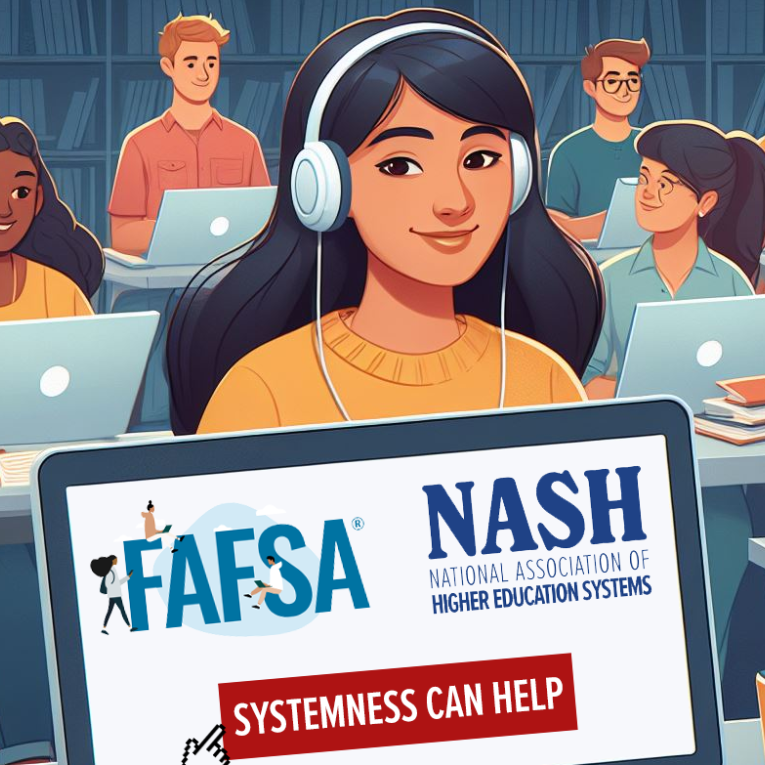Systemness in Action: Addressing FAFSA Challenges
April 25, 2024

Last year, the Department of Education introduced updated and enhanced Free Application for Federal Student Aid (FAFSA) forms, aiming to simplify a previously lengthy and complex process. However, as you might expect, rolling out a new platform of this significance created new challenges for students submitting applications. The ensuing delays resulting from these challenges have afforded higher education institutions less time to compile student aid packages, thereby providing students with a narrower window to make enrollment decisions.
In response, higher education systems and institutions across the nation responded quickly to put a range of resources in place for students and their families including virtual meetings, webinars, hands-on-training, and advisory committees. As NASH regularly convenes Chief Academic Officers, Chief Financial Officers, and Communications and Government Relations Officers, we have seen firsthand how systemness has enhanced support for students and families navigating the financial aid process.
Why Systemness?
Higher education systems play a crucial role in addressing the challenges posed by FAFSA delays for several reasons.
- Many individual campuses face constraints, lacking the resources or capacity to independently access additional funding and support needed to rapidly respond to students’ needs. By centralizing support efforts, systems ensure equitable access to financial aid resources for all students, regardless of the institution they attend.
- Systems can leverage resources and share best practices efficiently across multiple institutions, optimizing the impact of assistance programs. This strategic approach maximizes the effectiveness of support initiatives for students in need.
- Direct allocation of resources empowers systems to identify and address urgent needs. By closely monitoring FAFSA data and student outcomes, systems can tailor their support initiatives to address specific challenges faced by students and families, ultimately ensuring that no student is left behind in their pursuit of higher education.
NASH member systems have demonstrated leadership and ingenuity in their responses to the updated FAFSA rollout. A commendable example includes the Kentucky Council on Postsecondary Education (KYCPE). They created relevant resources and communications for students and families such as hosting statewide Facebook Live events and running a PSA campaign highlighting available assistance.
It’s also important to note the key role that centralized support for both campuses and students can play. Several systems, such as the University of Maine System, CUNY, SUNY, and Minnesota State, have taken advantage of their centralized offices of student financial aid services to streamline communication and workflow. Additionally, systems like the University of Alabama System and the University of California System have extended deadlines to maximize opportunities for students to confirm their eligibility for need-based aid.
Systemness has proven to be invaluable, allowing institutions to pool resources, streamline processes, and provide targeted assistance where it’s needed most. Through collective action and strategic initiatives, systems can overcome the challenges posed by FAFSA complications and empower every student to pursue their educational aspirations with confidence and support.
